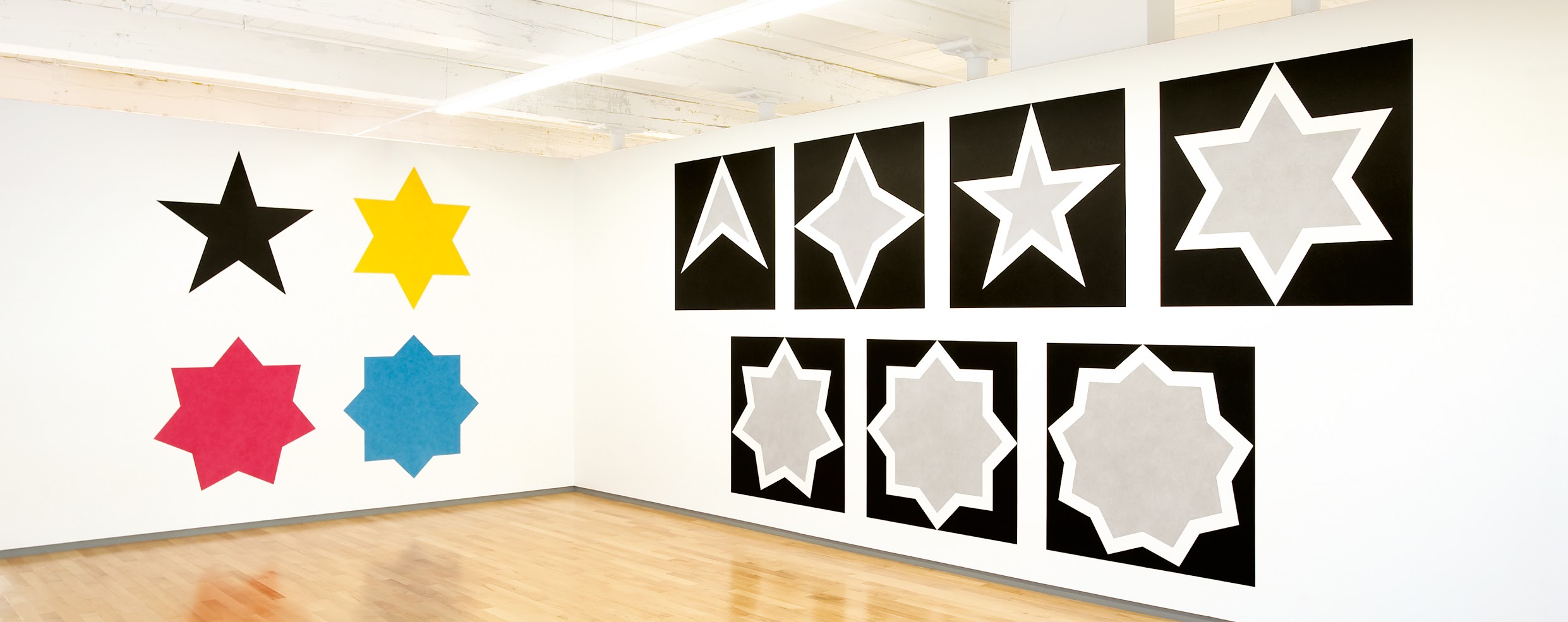Sol LeWitt
- Sol LeWitt
Stars with three, four, five, six, seven, eight, and nine points, drawn with a light tone India ink wash inside, an India ink wash outside, separated by a 6-inch (15 cm) white band.
January 1983
India ink wash
Courtesy of the Estate of Sol LeWitt
First Installation
Carol Taylor Art, Dallas
First Drawn By
Julie Jarvis, Renee Miliken, Anthony Sansotta
MASS MoCA Building 7
Second Floor
Like nearby Wall Drawing 396, Wall Drawing 386 consists of a progression of stars, with an increased number of points in each subsequent figure. While the star shape may seem to be a departure from Sol LeWitt’s vocabulary of simple shapes and construction methods, the wall drawing actually represents a continuation of his interest in shapes, sequences, pattern and geometric problem-solving.
In order to determine the shape of the star, a regular polygon is inscribed in a circle. The number of sides the polygon has determines the number of points the star will have. The regularity of the original polygon ensures that the stars points will be evenly spaced. In short, these apparently complex forms are iterations of the basic visual and geometric vocabulary to which LeWitt has committed.
The presence of the India ink wash borders around each of the stars is seen again in later works such as Wall Drawing 391, in which the black boundaries and the whiteness of the wall provide a distinct component of the drawing.
Backstory
The seven-pointed star proved difficult to construct due to the inaccuracies inevitable when estimating using ruler and compass, the preferred tools of the LeWitt crew. In order to approximate the shape of this star as closely as possible, an intern who studies math was brought in to formulate a new construction method. The same draftsman talks about his interest in LeWitt’s work as being related to his interest in pure math: ”the same sort of abstract beauty that inspires mathematicians
also inspires Sol’s work. For instance, the idea of laying out your parameters and exhausting
all the possible combinations, and then making so explicit your process, is something that I just find so inspiring and beautiful in the same way that I find pure math.”


